Makerspaces: More Than a Place to Tinker
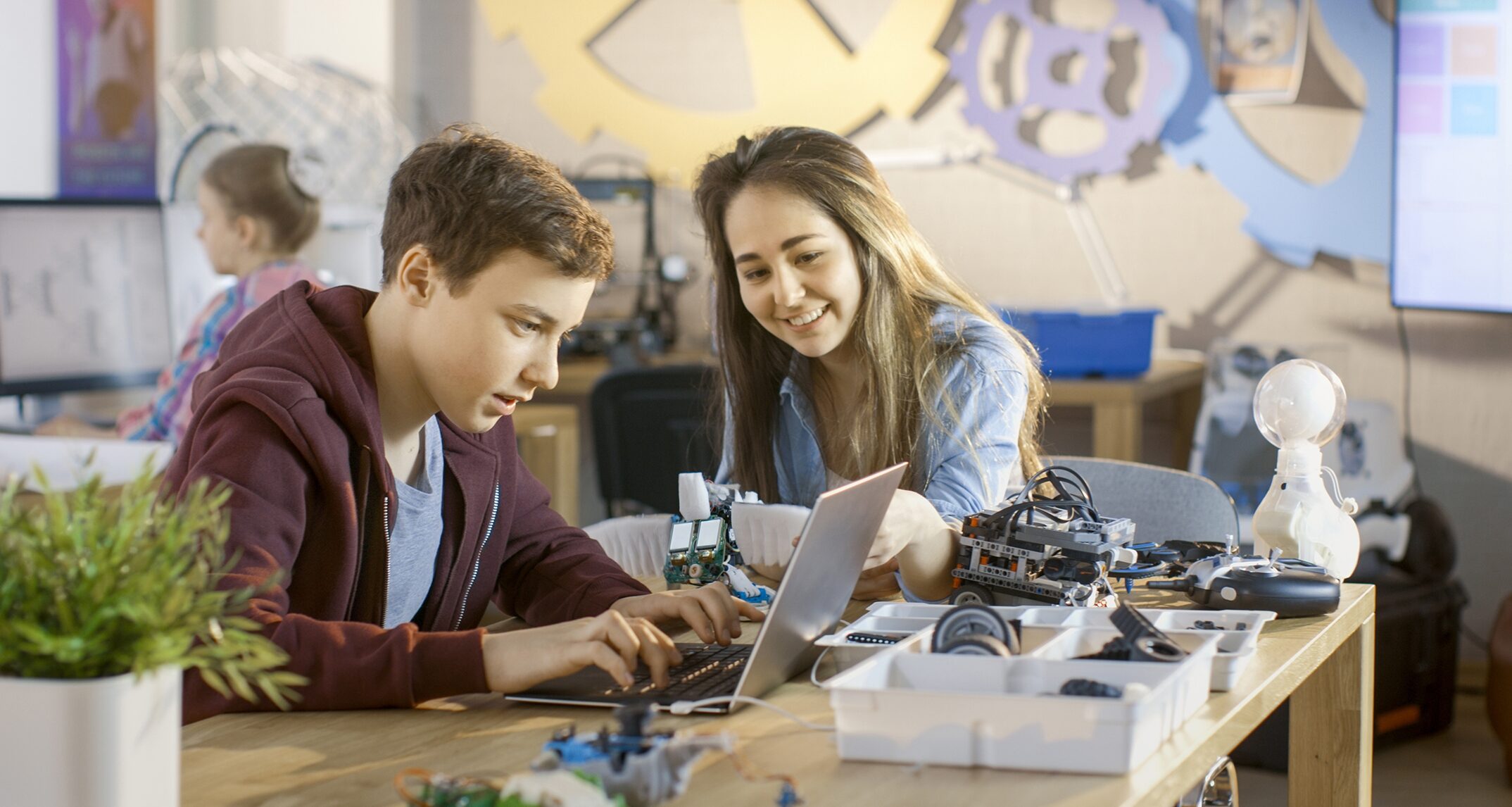
As architects who are passionate about creating innovative spaces that support ever-evolving educational delivery models, it is a highlight of our careers to have the opportunity to speak to future generations of “makers.” Not only does this help keep us up-to-date on the tools and technology needed to support a makerspace, but it reminds us of the critical element needed for these environments to succeed: making is less about the tools used and more about the approach to learning. Whether the room is outfitted with laser cutters or scissors, a makerspace serves as a gathering point for projects, mentors, resources, and inquiry. Designing a space to support these factors is what differentiates makerspaces from general classrooms. The educational exploration promoted by makerspaces, like the room itself, invites students to discover potential solutions in a self-directed way. The tools and resources are only there to facilitate student-led learning; and it is this fact that we must keep in mind when these spaces are designed.
The term makerspace is often used to encompass rooms that support a wide range of different educational programs. Makerspaces are commonly associated with STEM-focused learning, but some makerspace formats and programs are geared toward the creative arts. Regardless of the type of curriculum being explored, a common thread of the projects or problems pursued is that there is more than one correct answer. Furthermore, finding the correct answer is often one of the lower priority goals, with greater emphasis put on the exploration and discovery encountered during the process. This multiplicity of paths to different solutions makes some students uncertain and fearful of making mistakes; supporting student-led learning in a makerspace helps build students’ confidence with a growth mindset. Taking risks, learning from mistakes, and continuing to explore is both part of learning and part of every successful makerspace. There are many formats for makerspaces, each tailored to promote a different learning focus. Below are some of the most well-known programs that find their home in makerspaces.
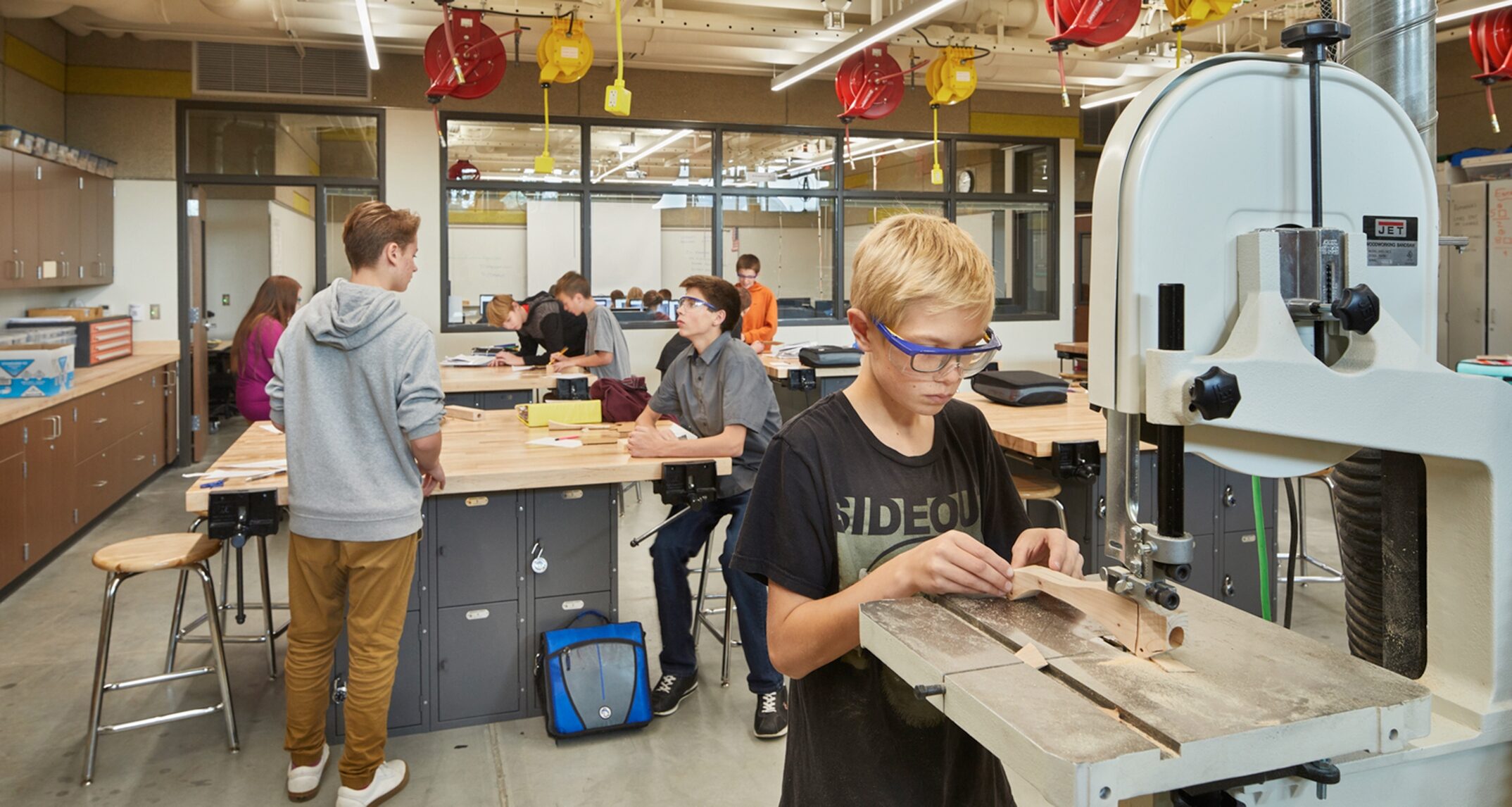
The makerspace at Salk Middle School features complementary spaces for making. A shop, or “dirty” making space is supported by a “clean” research space beyond which houses computers, 3D printers, and other supporting devices. – NAC
Career Technical Education (CTE)
CTE is a robust career training program typically found at the middle and high school grade level. Makerspaces used for CTE usually provide powerful and sophisticated tools that require special infrastructure and support, such as wood working or welding equipment. The focus of CTE projects is geared toward successful mastery of these tools, and their use within fabrication or manufacturing-oriented career settings. Historically, there has been a tendency for CTE programs to be academically siloed from other subjects. However, there is a growing understanding that makerspaces and their programs gain relevancy from a multidisciplinary approach. Increasingly, we see CTE programs promoted because of the cross-disciplinary soft skills such as planning, communication, and attention to detail that they teach. Mirroring this appreciation for the academic skills acquired alongside career skills, CTE shop spaces are increasingly connected to dedicated classrooms or lab space. So while it may seem odd to some to think of a wood shop as a makerspace, we include CTE programs under the makerspace umbrella.
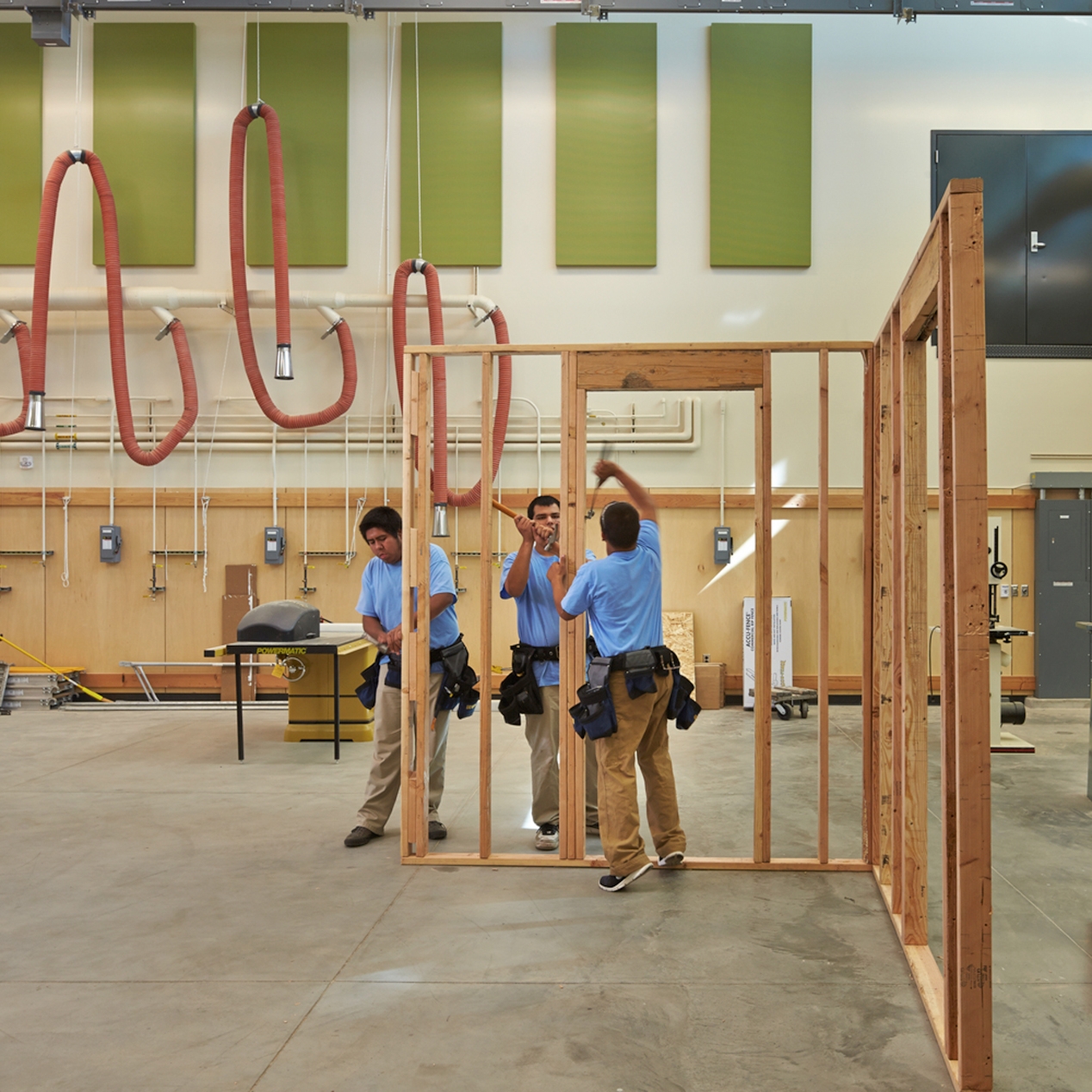
The Columbia Basin Skills Center features customized spaces for career exploration that are intentionally designed for development of a specific set of skills, such as culinary or construction technology. – NAC
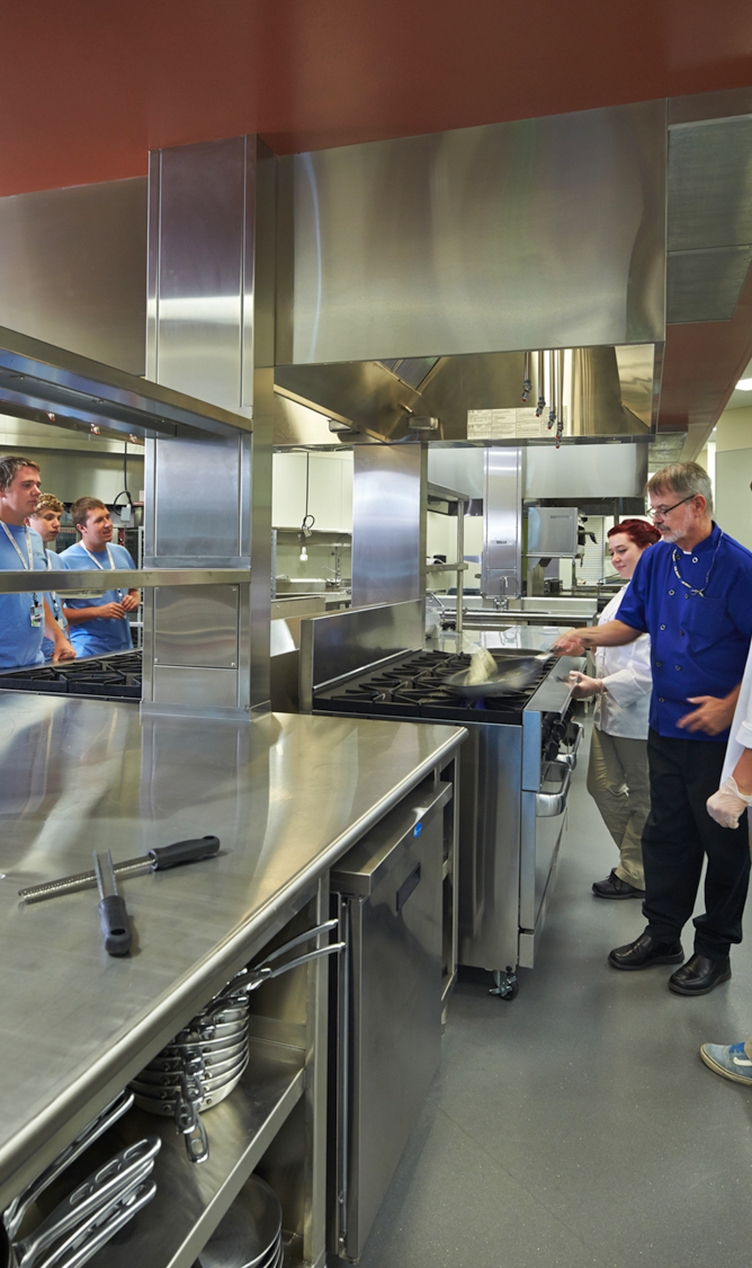
Da Vinci Studios
Da Vinci Studios are makerspaces that are set up to accommodate both art and science projects. These spaces are becoming common in elementary schools, replacing the standard art room. Da Vinci Studios are a great introduction to makerspaces because the tools require little expertise to master, allowing students to focus their attention on their projects and the student-led learning process. A key component of Da Vinci Studios is a display area for student work, not only to showcase the finished product, but to highlight the work in progress as well. These display areas celebrate each student’s process of discovery on their project, becoming a way that they can share knowledge with each other and stimulate new ideas.
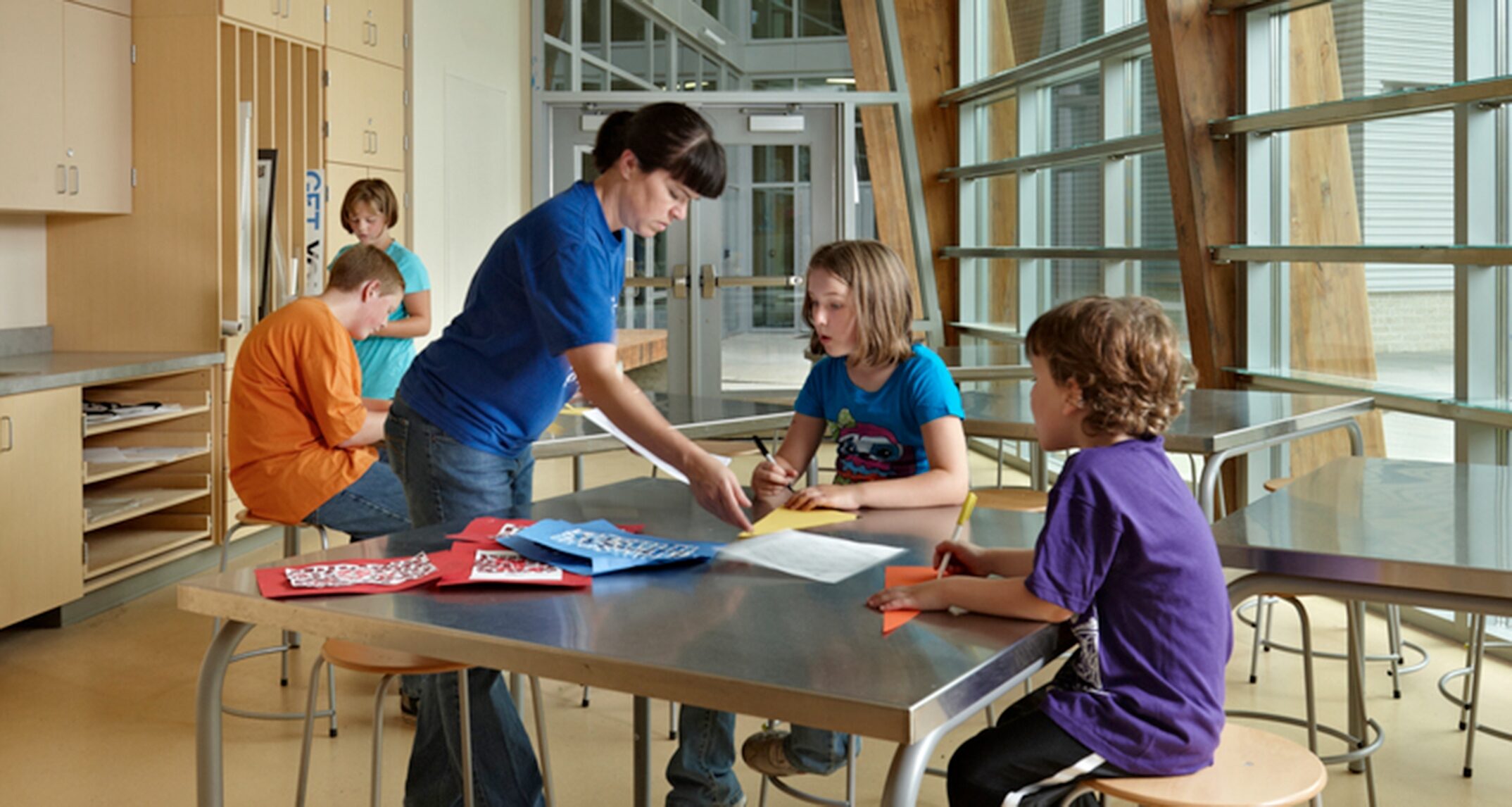
Da Vinci Studios put the student activities and projects on display for peers and visitors to see. – Machias Elementary School
Fab Labs
A Fab Lab is a prototyping space built for learning, innovation, and entrepreneurship. In the strictest sense, Fab Labs are a makerspace model promoted by MIT’s Center for Bits and Atoms (CBA) as a means of educational outreach. Along with this specific format, we would group any makerspace outfitted to teach skills in technology, digital design, and fabrication. For this reason, the key assets found in Fab Labs aren’t hand tools, they are CNC (computer numerically controlled) tools that are operated from a digital file or interface. In fact, the intent of the CBA Fab Lab model is to contain a standardized set of resources so the learning, innovation, and entrepreneurship efforts can be shared and applied from one Fab Lab to another. Because Fab Labs have a strong technology element and a lot of variety, these rooms tend to be zoned into areas for computer work and collaboration, areas for light duty fabrication like soldering and 3D printing, and areas for heavy duty fabrication like CNC routing, laser cutting, and shop tools. Regardless of the tools and how they’re organized, the educational component of a Fab Lab is student-led, with every participant exploring their projects, overcoming obstacles, and creating their own knowledge.
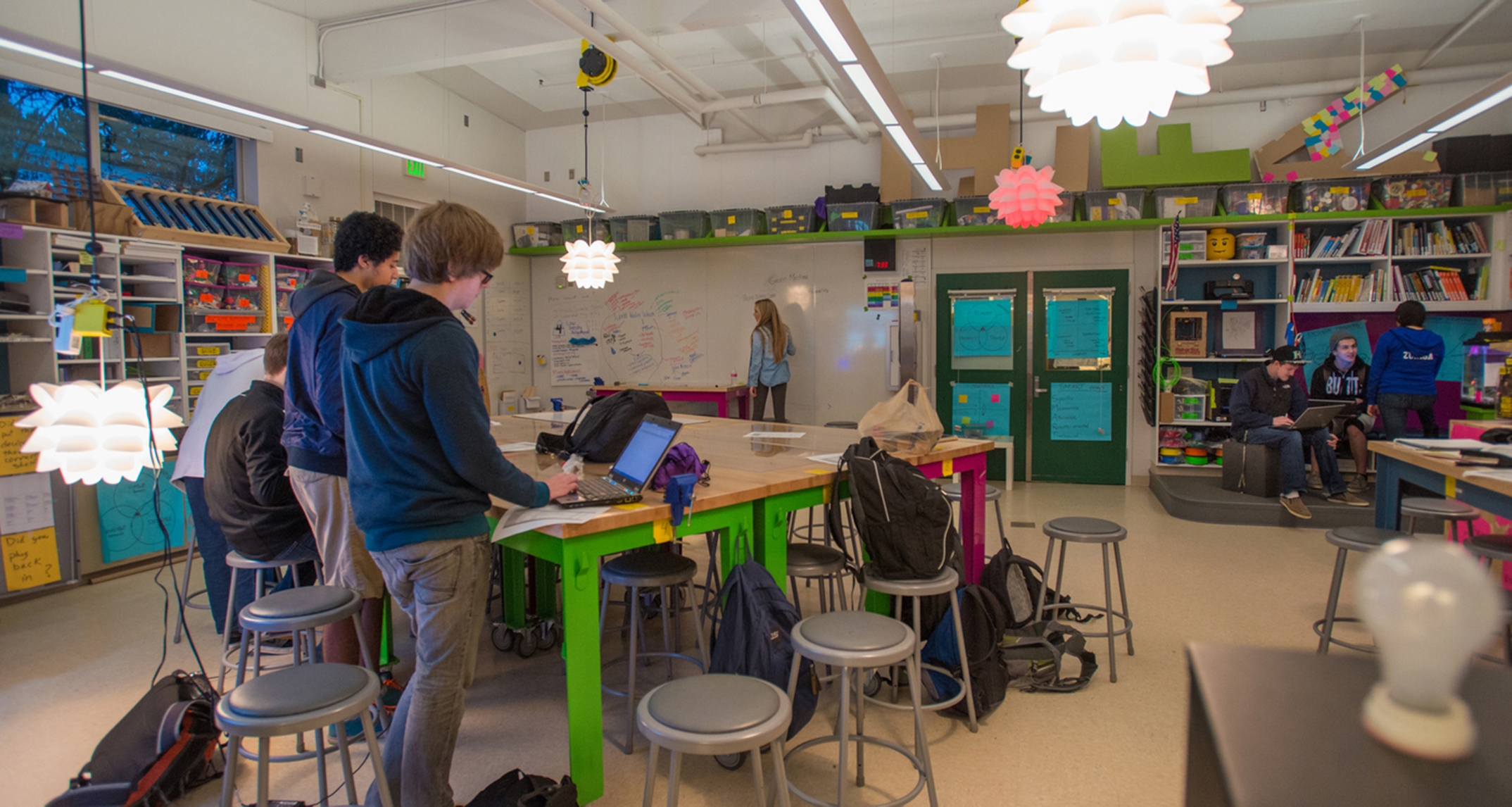
The variety in Fab Labs requires separate zones around the room for different modes of making. – Inglemoor Classroom Remodel - NAC. Photo credit Chloe Jarvis
Hackerspaces
Hackerspaces are frequently focused on hobbies, used primarily for individuals to have fun and relax. Because of that, these environments are sometimes regarded as incubator spaces for emerging small businesses. Outside of an academic setting, hackerspaces often have an adult atmosphere that is not always very welcoming to kids. Within the K-12 setting, we see a similar model to hackerspaces emerging in some schools’ libraries. These shared makerspaces aren’t “owned” by an instructor. They’re available for any class to schedule and use, or the equipment is open for use by students during elective periods or before and after regular school hours. This trend is happening on college campuses and public libraries as well. Without a specific curriculum to follow the projects in these hackerspaces, like those in makerspaces, are exploratory and self-motivated.
Creating an atmosphere that celebrates the skills developed through making is critical to a holistic educational experience. Building mental agility and tenacity through repeated trial and error creates a growth mindset, and give students the confidence that any problem can be solved. With a continually automated lifestyle, the art of making and creative thinking must be brought to the forefront to give future generations the skills they will need to succeed. We have offered a definition for a makerspace, and described subsets of spaces that fall under the general “makerspace” definition, but the critical takeaway is the importance of making.
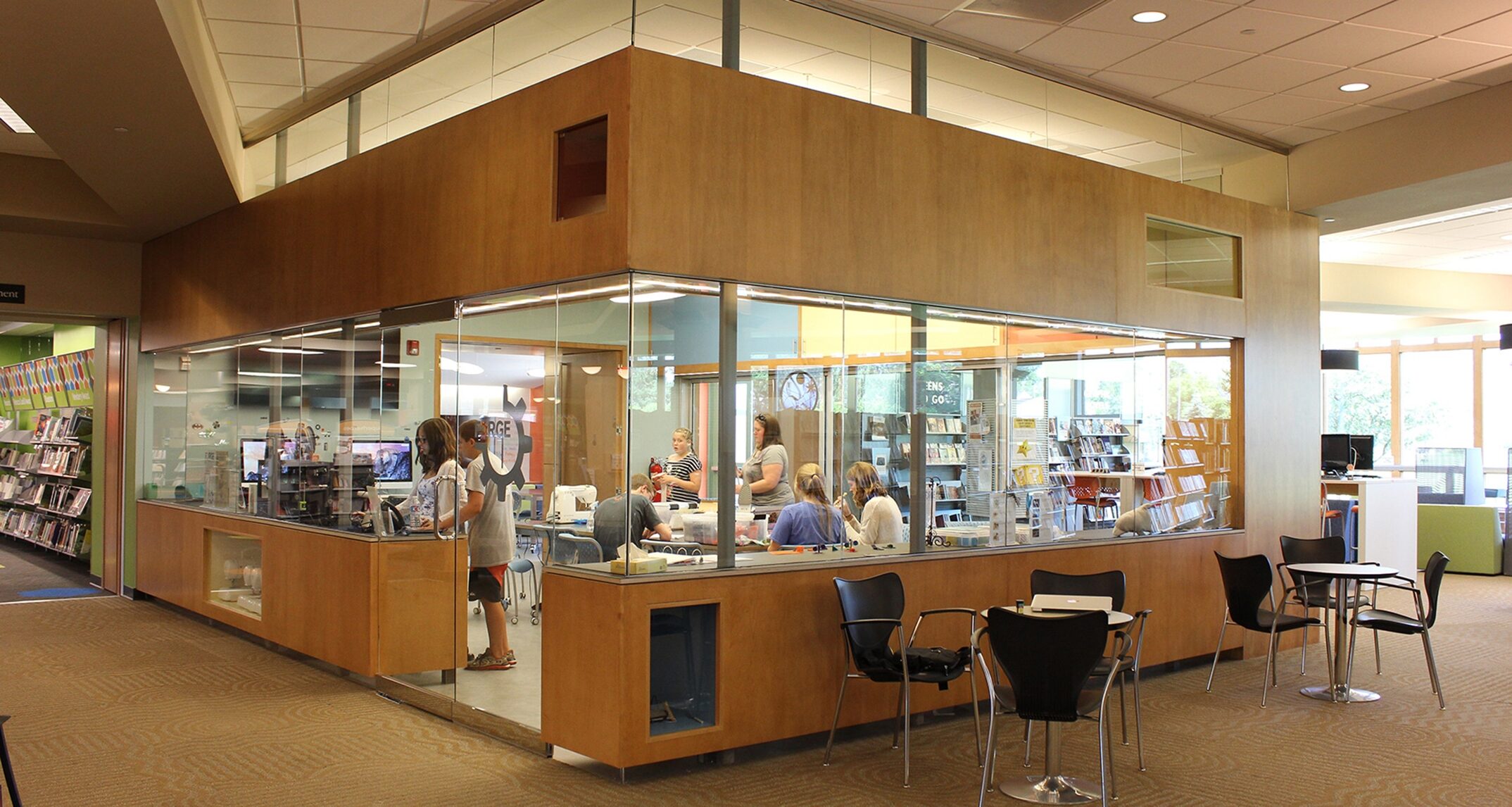
The Forge is an open makerspace within the Ela Public Library that features large expanses of glass to showcase learning and put project work on display. Image courtesy of Demco Interiors
Conclusion
The ideal makerspace isn’t one filled with all the latest technology. The ideal makerspace combines projects, mentors, resources, and inquiry. It includes space to work on and display projects, room to invite and integrate mentors into classroom activities, storage for keeping resources ready at hand, and collaboration areas where students can explore and challenge each other. Having a deep understanding of the activities that may occur in these spaces informs the design process to ensure the final space empowers the making process. The room or rooms must support student-led curriculum by eliminating potential obstacles, such as lack of access to utilities like water and power or limited storage space. As programs evolve the room must evolve with them, ensuring the students and educators can continually develop their skillset.
The art of making can happen anywhere, with any tools and materials; we just need to make it happen. Let’s go explore!
